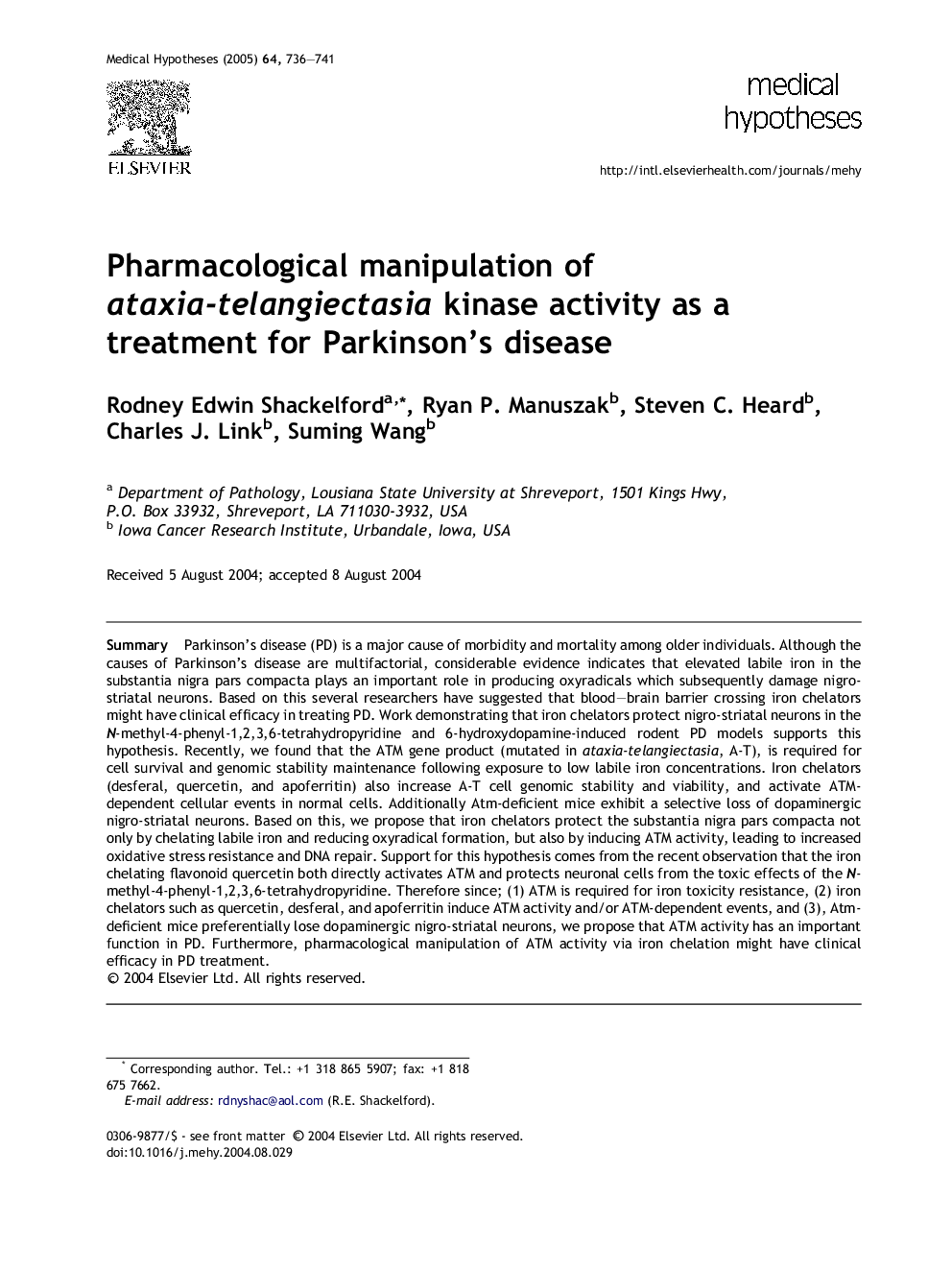| Article ID | Journal | Published Year | Pages | File Type |
|---|---|---|---|---|
| 8995792 | Medical Hypotheses | 2005 | 6 Pages |
Abstract
Parkinson's disease (PD) is a major cause of morbidity and mortality among older individuals. Although the causes of Parkinson's disease are multifactorial, considerable evidence indicates that elevated labile iron in the substantia nigra pars compacta plays an important role in producing oxyradicals which subsequently damage nigro-striatal neurons. Based on this several researchers have suggested that blood-brain barrier crossing iron chelators might have clinical efficacy in treating PD. Work demonstrating that iron chelators protect nigro-striatal neurons in the N-methyl-4-phenyl-1,2,3,6-tetrahydropyridine and 6-hydroxydopamine-induced rodent PD models supports this hypothesis. Recently, we found that the ATM gene product (mutated in ataxia-telangiectasia, A-T), is required for cell survival and genomic stability maintenance following exposure to low labile iron concentrations. Iron chelators (desferal, quercetin, and apoferritin) also increase A-T cell genomic stability and viability, and activate ATM-dependent cellular events in normal cells. Additionally Atm-deficient mice exhibit a selective loss of dopaminergic nigro-striatal neurons. Based on this, we propose that iron chelators protect the substantia nigra pars compacta not only by chelating labile iron and reducing oxyradical formation, but also by inducing ATM activity, leading to increased oxidative stress resistance and DNA repair. Support for this hypothesis comes from the recent observation that the iron chelating flavonoid quercetin both directly activates ATM and protects neuronal cells from the toxic effects of the N-methyl-4-phenyl-1,2,3,6-tetrahydropyridine. Therefore since; (1) ATM is required for iron toxicity resistance, (2) iron chelators such as quercetin, desferal, and apoferritin induce ATM activity and/or ATM-dependent events, and (3), Atm-deficient mice preferentially lose dopaminergic nigro-striatal neurons, we propose that ATM activity has an important function in PD. Furthermore, pharmacological manipulation of ATM activity via iron chelation might have clinical efficacy in PD treatment.
Related Topics
Life Sciences
Biochemistry, Genetics and Molecular Biology
Developmental Biology
Authors
Rodney Edwin Shackelford, Ryan P. Manuszak, Steven C. Heard, Charles J. Link, Suming Wang,
